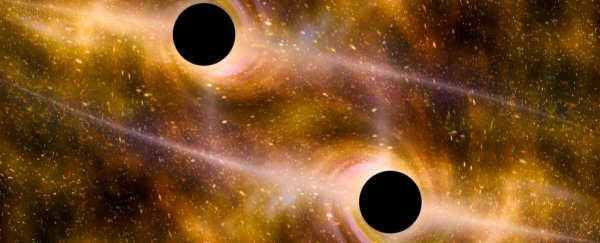It almost seems like astronomers are in a race to unveil the biggest black holes they can find. Most recently, a team of German astronomers claimed to have discovered a black hole 40 billion times the mass of the Sun.
But what if there are also black holes many magnitudes smaller?
In a study published today in the prestigious journal Science, a team of astronomers from Ohio State University claim to have discovered an object that belongs to a previously missing class of black holes.
"We're showing this hint that there is another population out there that we have yet to really probe in the search for black holes," lead author Todd Thompson said in a statement.
If confirmed, current theories would have to take into account a new class of black hole - forcing us to rethink how we understand the way stars and other kinds of celestial objects are born and die.
Thompson and his team were puzzled by the huge gap between the size of the biggest neutron stars - extremely dense and relatively small stars that form after larger stars implode after a supernova - and the smallest black holes we know of.
Neutron stars are fairly small - two to three times the mass of the Sun - but stars any larger than that tend to collapse in on themselves and form black holes.
Their smoking gun: a giant red star that was orbiting something that at first appeared to be too small to be a black hole in the Milky Way, but was much bigger than the neutron stars we know of.
Their finding really did turn out to be a low-mass black hole, and it was only 3.3 times the mass of the Sun - usually the black holes we've found in the past are at least five times the Sun's mass or much, much larger.
The discovery could redefine the way we look at the life cycle of a star.
"If we could reveal a new population of black holes, it would tell us more about which stars explode, which don't, which form black holes, which form neutron stars," said Thompson. "It opens up a new area of study."
This article was originally published by Futurism. Read the original article.
